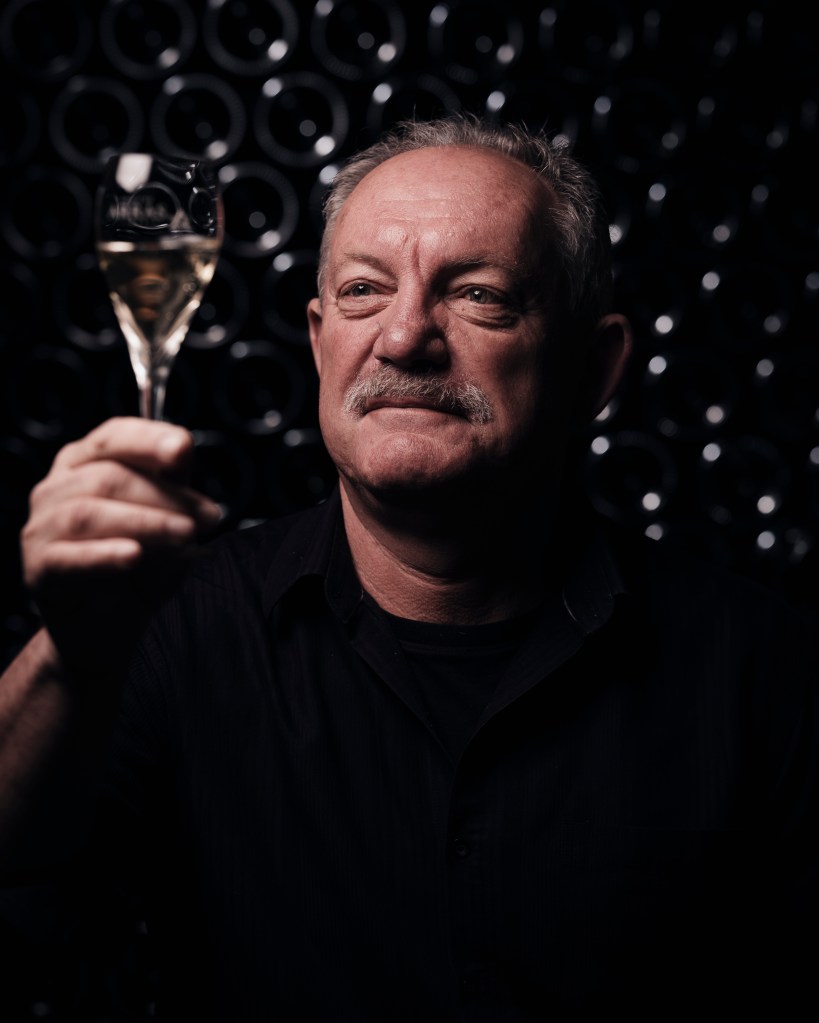A 21-year-old Australian sparkling wine has been named the world champion “Library Vintage” sparkling wine for 2022.

It was never too hard for Ed Carr to get the suits and the bean counters along to meetings to discuss his plans to extend the aging process of his top-end sparkling wine.
Not only would he have bottles of their own House of Arras for sampling, but he’d also have an array of the world’s finest bubbles for comparison. A lot of busy executives at what was then Hardys suddenly had room in their diaries.
If they gave Carr the go ahead to age the wine for 15 years – seven more years than they were already doing, putting it on a par with the most expensive Champagnes – they’d also have to bump the price up to around $100 a bottle. Such a price was unheard of for an Australian sparkling in those early days of this century.
“We did a lot of these comparative tastings back then,” says Carr. “They could see how well we compared, so we could slowly ease people into the concept.”
And so it was that in around 2005, the decision was made to keep a few thousand bottles of the House of Arras 1998 vintage in storage for another seven years, in a warehouse in the Adelaide Hills, kept permanently at 14 degrees Celsius.
Accolade Wines, chief marketing officer Sandy Mayo said the Late Disgorged cost more than twice as much to make as the eight-year-old vintage selection. “The question was whether an Australian brand could push into new realms of pricing, where previously only champagne had played.”
The answer was yes. Fifty dollars a bottle had seemed outrageous in 1999 when the House of Arras had launched its top-of-the-range sparkling to catch all that Millennium partying. People were getting Moet for less.
“There was a definite glass ceiling,” recalls Carr. “For a lot of people, once they got to a certain price point, they would automatically veer to French. It’s taken years to wear that down.”
Every year the wine got good reviews and would sell out, but the turning point came in 2020 when London-based Decanter magazine named the House of Arras Late Disgorged 2004 its top sparkling wine in the world that year across all categories. A Krug 2006 came second.
The glass ceiling was shattered. But it’s not like Carr could just press a button to increase supply. They needed to plant more vines – or convince their growers to plant more – and wait 15 years. Any surge in production from the 2020 win will come to market in 2035. And that’s why this year’s Late Disgorged has a ready market at a recommended retail price of $265.99, or $44 a glass.
Inelastic supply means the price must rise. “But you’ve got to be careful not to fly too close to the sun and melt,” says Carr.
It’s an interesting choice of metaphor. While winemakers are focussed on climate change now, when the decision to source all the Arras grapes from Tasmania was made in 1998, global warming was not on the agenda, says Carr. It was all about the flavours they were trying to create.
Last week, the 2001 House of Arras Blanc de Blancs, was awarded the Library Vintage trophy at the 2022 Champagne & Sparkling Wine World Championships, the first time that award has left the Champagne district.
Australian wine guru James Halliday said the House of Arras was the only Australian sparkling selling for more than $200. Was it worth it? “Yes, it’s unique in the Australian context, and is extremely good,” Halliday said. “Bloody marvellous to drink.”
Despite being the seventh largest bubbly producer, Australia rose to third in the medal tally at the world championships for the first time. Behind Italy and France.
AUSTRALIAN GOLD MEDALLISTS AT THE 2022 CHAMPAGNE AND SPARKLING WINE WORLD CHAMPIONSHIPS
Bream Creek Vineyard 2016 Cuvée Traditionelle
Tasmania, $40
Chandon Australia 2016 Blanc de Blanc
Cross-Regional Blend, $41
Croser 2018 Vintage Sparkling
Picadilly Valley, South Australia, $42
House of Arras 2006 Ej Carr Late Disgorged
Tasmania, $265.99 rrp
House of Arras 2001 Museum Release Blanc de Blancs
Tasmania, $350 rrp
Swift 2011 Blanc de Blancs
Orange, NSW, $120
THOUGHT BUBBLES
Worldwide sparkling wine market was worth US$35 billion last year, growing from US$13 billion in 2000
Sparkling wines represent 11% of the global wine market by volume, but $17% by value
Australia ranks seventh in the world in sparkling wine exports by value – behind Italy, France, Spain, The US, Germany, and Russia.
The major markets for Australian sparkling wines, in descending order, are: NZ, UK, Canada, Singapore, Japan, The US.
China has never been a big consumer of our bubblies
Australian sparkling exports are in decline, but Tasmanian exports have tripled in the last five years. The US and UK take the bulk of them.